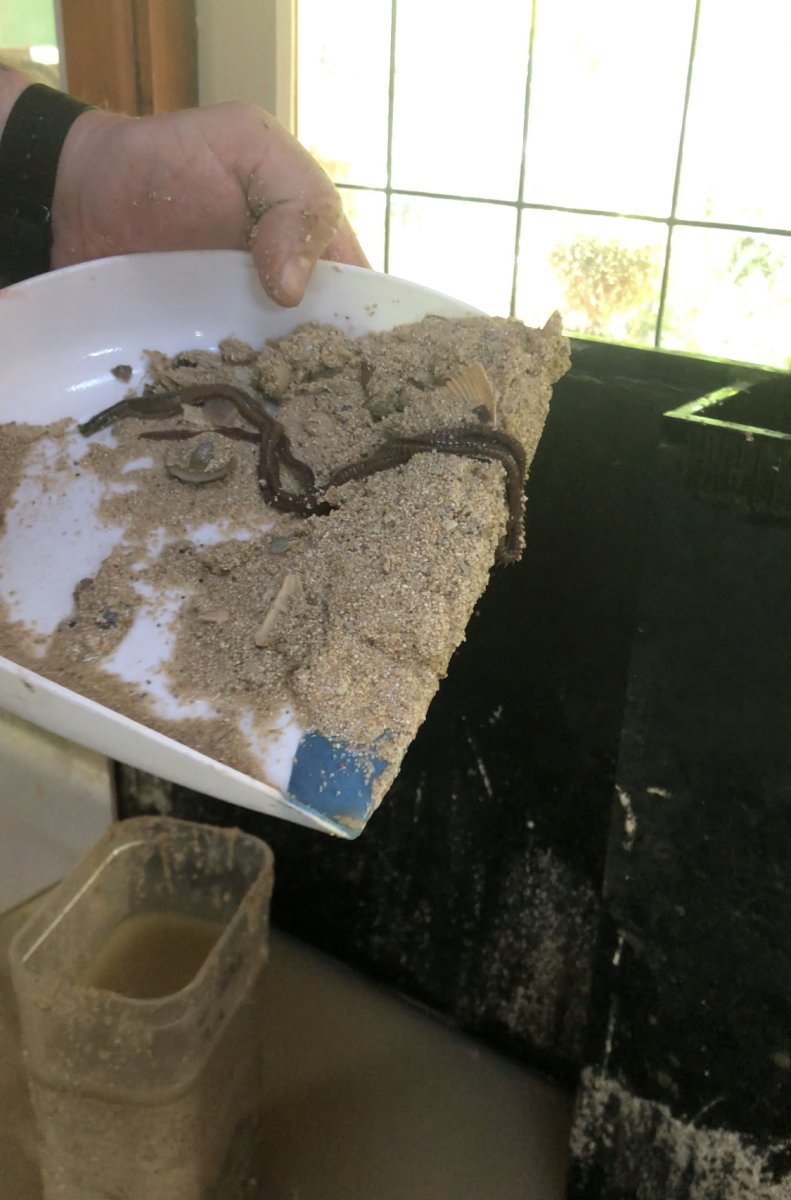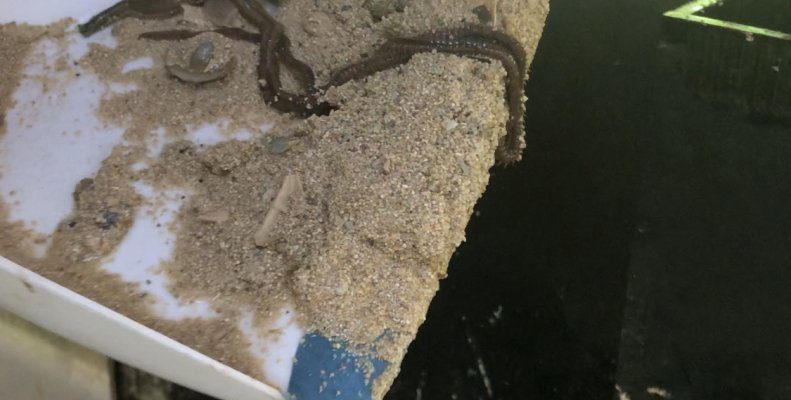
Bobbit worms, with their long, segmented bodies and serrated jaws, play a vital role in the reef but can pose a threat to unsuspecting snorkelers. Don’t let the excitement of exploring underwater ecosystems overshadow your safety. So, let’s dive into everything you need to know about Bobbit worms and how to keep yourself safe while enjoying the wonders of snorkeling.
What Are Bobbit Worms?
Bobbit worms, scientifically known as *Eunice aphroditois*, are marine creatures that can grow up to 10 feet long! These worms are often found hiding in the sand or within the rocky crevices of coral reefs. With their vibrant colors and unique appearance, they look almost like an underwater plant—until they strike.
These worms have long, elongated bodies with a head that features sharp, tooth-like jaws. They’re not aggressive by nature, but they’re skilled predators. When prey swims too close, a Bobbit worm can launch out from its hiding place and quickly grab it, thanks to its lightning-fast reflexes. It’s a bit like how a snake strikes when it’s hungry, but underwater.
You might be wondering why these incredible creatures are named Bobbit worms. The name comes from the infamous John Wayne Bobbitt—who had his own bizarre story involving a knife. It’s a quirky name for a creature that can deliver quite a painful bite!
Where to Find Bobbit Worms
You can find Bobbit worms in tropical and subtropical waters around the world, particularly in coral reefs. They tend to live buried in the sand or hiding in the rock crevices, camouflaged by their surroundings. If you’re snorkeling in these areas, it’s essential to keep an eye out, as they can blend in quite well.
These worms prefer environments with plenty of food sources, like other fish and small crustaceans. So, if you’re exploring a reef bustling with activity, you might be swimming near one. Just keep in mind that even if you can’t easily spot them, they’re there, lurking safely out of sight.
Be careful when snorkeling near rocky areas or sandy bottoms. If you touch these hidden spots or disturb the sand too much, you might accidentally provoke a Bobbit worm. While they usually won’t attack unless threatened, it’s best to maintain a safe distance.
How Bobbit Worms Affect Snorkelers
So, why should you care about Bobbit worms? Well, if you’re unlucky enough to encounter one up close, they can give you quite a nasty surprise. Their bites can be painful and may cause bleeding. This can be particularly concerning for snorkelers who might not realize they’ve come too close.
Here’s the crux: Bobbit worms may not actively seek out humans, but their presence means you should be cautious. If you’re snorkeling near areas where you’ve heard Bobbit worms are common, heed the advice of local guides and experts. They often know where to steer clear of potential dangers.
It’s essential to educate yourself about these creatures, so you’re better prepared. Ignorance can lead to accidents, so understanding how to spot a Bobbit worm or prevent an encounter can help ensure your snorkeling trip is memorable for all the right reasons.
Reef Safety Tips for Snorkelers
Snorkeling is all about exploring and having fun, but safety should always come first. Here are some key tips to keep in mind while you’re out in the water:
- Buddy System: Always snorkel with a friend. Having someone close by can help if anything goes wrong.
- Stay Aware: Keep an eye on your surroundings. Watch out for any creatures lurking in the sand or coral.
- Respect Marine Life: Avoid touching or disturbing any marine creatures. This is not only for your safety but also for theirs.
- Understand Your Environment: Before snorkeling in a new area, do some research. Know what creatures might be present and learn their habits.
- Wear Protective Gear: Consider using wetsuits or rash guards. They provide an extra layer of protection against bites or stings.
Each of these tips can significantly enhance your snorkeling experience while minimizing risks. Remember, the ocean is beautiful but unpredictable, so staying informed is always a good call.
Dealing with Bobbit Worm Bites
If you do happen to get bitten, don’t panic! First, assess the situation. Bobbit worm bites may hurt and bleed, but they’re usually not life-threatening. Here’s what you should do:
1. **Get Out of the Water:** If you feel pain or see blood, calmly get out of the water to address the injury.
2. **Clean the Wound:** Gently rinse the bite area with clean, fresh water. Avoid using seawater, as it may irritate the wound more.
3. **Apply Pressure:** If it’s bleeding, apply a clean cloth or your hand to the area to stop the bleeding.
4. **Seek Medical Attention:** Even if it seems minor, it’s best to see a medical professional. They can give you proper care and ensure there’s no infection.
Here’s the thing—being prepared helps you handle unexpected situations with confidence. Knowing how to react can make all the difference in your snorkeling experience.
Snorkeling is truly an amazing way to connect with nature and witness the beauty of the underwater world. But as you explore, staying informed about potential dangers, like Bobbit worms, is vital. These creatures, while fascinating, remind us that the ocean can be unpredictable.
By following safety tips, respecting marine life, and knowing how to react in case of a bite, you can fully enjoy your snorkeling adventures. Embrace the wonder of the reefs, and remember that your safety is just as important as the adventure. So grab your gear, dive in, and explore the beauty of the ocean—safely!

